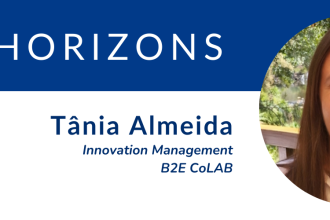B2E Technological Sonar Initiative #7
Special World IP Day edition
B2E presents a special Intellectual Property (IP) Sonar edition to mark
this World IP Day, April 26.
Check out our curated selection of national and international initiatives to retain, within the scope of new patents and technologies in the blue bioeconomy sector.
Aquaculture
Feed
- Herbal Feed Additive
The present invention relates to a product that is made of an herbal mixture comprising saturated and unsaturated fatty acids together with components with bioactive sulfur content and can be used in fish feeds as suspension.
In Espacenet
Discover more here.
- Fish feed additive comprising two plant extracts and a seaweed extract (Palmaria palmata) as a flavour masking agent and method for combating/eliminating Caligus infestations through the sterilisation of females in fish farms and marine concessions
The present invention relates to aquaculture, in particular to a fish feed additive comprising two plant extracts and a seaweed extract selected from Palmaria palmata as a flavour masking agent, and to a method for combating ectoparasites in fish. Further still, in particular, to a feed additive and method for combating/eliminating Caligus in fish farms and marine concessions, resulting in the sterilisation of females of the ectoparasite
In Espacenet
Discover more here.
- Complete food for aquaculture animals formed from insect larvae
The present invention provides food for aquaculture animals based on insect larvae which have been coated with a coating supplemented with nutrients that are not found in sufficient quantities in the insect larvae alone, and methods of producing same. The present invention further provides methods of using the food for aquaculture and aquarium feeding.
In Espacenet.
Discover more here.
- Combined probiotic for aquaculture based on spore-forming bacteria of the genus bacillus and a method for production thereof
Disclosed is a group of inventions related to biotechnology and fish farming: a combined probiotic preparation for use in aquaculture cultivation, which includes bacterial strains Bacillus subtilis VKM B-3154D, Bacillus subtilis VKM B-3171D, Bacillus licheniformis VKM-B-3172D, adapted to growth in conditions of low temperatures (temperatures of aquaculture habitation) and at the same time having very high thermal stability; method of producing a combined probiotic preparation.
In Espacenet.
Discover more here.
- A vegetal association as a functional ingredient for aquaculture feed
The use of a vegetal association as a functional ingredient for aquaculture feed, and particularly as an antibacterial ingredient against aquaculture pathogens, as well as aquaculture feed and aquaculture feed supplements comprising the same, are disclosed. The vegetal association of the invention surprisingly and unexpectedly showed a synergistic effect that can be used in aquaculture feed against aquaculture pathogens, thus achieving great results in terms of effectiveness even at very low concentrations, while avoiding the use of antibiotics, and at the same time preserving the human and animal health.
In Science Direct.
Discover more here.
Systems
- Aquaculture System
An aquaculture system comprising growing modules (GM) and liquid treatment modules (LTM). Each growing module is associated via a network of pipes with a respective liquid treatment module to form a pair wherein if liquid flow through a given pair is stopped and left to settle, liquid within the given pair is arranged to balance out to the same level.
In Espacenet
Discover more here.
- Smart Aquaculture Grow Out System
The present technology relates to aquaculture of fish and shellfish species such as shrimp in general and more specifically to a smart grow-out system for monitoring of grow-out conditions and distribution of aquafeed using machine learning algorithms, as well as methods of operating the same.
In Espacenet.
Discover more here.
8. Method for Raising Fish in a Recirculated Aquaculture System
The present invention relates to a method and a system for raising fish, more specifically to a method of transporting feed to a recirculated aquaculture system.
In Espacenet.
Discover more here.
9. Industrial livestock management leveraging digital twin computing
The approach utilizes digital twin computing to create a digital copy of biological and non-biological assets of a livestock production unit/facility (e.g., aquaculture, sericulture, dairy industry, meat industry, etc.) to improve the efficiency and reduce cost associated with the production of livestock. The usage of digital twins removes fundamental constraints concerning place, time, and human observation. Instead of control based on direct observation of physical objects, which requires physical proximity, digital twins enable remote control of livestock operations coupled with IoT sensors. This allows for the decoupling of physical flows from information aspects of farm operations.
In Espacenet.
Discover more here.
- Degradation of off-flavor compounds in aquaculture systems
A reacting canister utilizing transparent optical fiber technology coated with a photocatalyst and a plasmonic layer, including yttrium aluminium garnet nanoparticles, disposed between the optical fiber and the photo-catalyst to degrade off-flavour compounds in aquacultured aquatic life. The degradation of off-flavoured compounds (including 2-methylisoborneol) can be significantly enhanced by increasing the surface area of the catalyst. Coating individual transparent optical fibers and aligning those fibers in a canister configuration allows the treatment of large volumes of water in portable and scalable reactors. Once the fluid is treated, the fluid is returned to the reservoir containing the aquacultured aquatic life.
In Espacenet.
Discover more here.
Living Marine Resources
Food
- Method for extracting protein from sea lettuce
The present invention relates to a method for extracting protein from sea lettuce and, more specifically, to a method, which reacts, with a Laceyella sp. microorganism, sludge obtained by removing pigments, polysaccharides and the like from sea lettuce, so as to prepare a sea lettuce extract having a high amount of protein.
In Espacenet
Discover more here.
- Dried seafood paste product and production method therefor
The present invention addresses the problem of providing a dried seafood paste product that is used in instant food products that can be reconstituted through cooking by pouring hot water or the like, and, when reconstituted, has a curved shape that looks like a dried seafood paste obtained by drying seafood as it is. The problem is solved by a dried seafood product having a double-layer structure including outer dough and inner dough, the dried seafood product being characterized by having a curvature of 20% or more.
In Espacenet
Discover more here.
- Method for producing seafood paste-like food product
The present invention addresses the problem of providing a seafood past-like food product having a comparable texture and physical properties to those of products including minced fish meat.
In Espacenet
Discover more here.
- Method of producing chips from hydrobionts
The invention relates to the fishing industry, namely, to the production of dry snack products such as chips, snacks, crackers containing fish and other aquatic organisms, and can be used in their manufacture.
In Espacenet
Discover more here.
Systems
- Freeze-drying device for instant marine fish processing
The utility model relates to the technical field of ready-to-eat marine fish processing equipment, in particular to a freeze-drying device used for ready-to-eat marine fish processing.
In Espacenet
Discover more here.
- System and methods for predictive modeling of seafood safety
A system and method for predictive modeling the safety of seafood using a seafood tracking system for harvested seafood products which includes generating regulatory tags that include visual regulatory data as well as a QR Code and monitoring harvest location environment data, logistical data, location environment data, and seafood temperature to be used as inputs to help determine recommended safety levels as well triggering if additional analysis, monitoring or testing is recommended. The seafood tracking system and predictive modeling system include the ability to be updated in real-time thus enabling those with access to the QR code the ability to check food consumption recommendations for any given seafood product prior to consumption.
In Espacenet
Discover more here.
- Process and system for smoking seafood and meat with reduced gas odours and improved flavour
The present invention relates to an improved process and system for cold smoking of seafood and meat. The process is directed towards the reduction of distasteful gas compounds in aerosol smoke that cause unwanted gas odors and flavors in subsequently smoked foods. The method is further effective in preserving the freshness, wholesomeness, and appearance of smoked seafood and meat by retaining the desirable preservative aerosol components of the smoke. A superior smoke aroma and flavor can be imparted to seafood and meat, without the interference of distasteful gases odors. The process is further highly efficient, by incorporation of condensation filtering to regulate water, collect, and recycle smoke flavoring liquid condensates, thereby maximizing the value recovery from the smoking system.
In Espacenet
Discover more here.
- A pack atmosphere support system for live seafood during extended air-freighted distribution chains
This invention relates to a combined oxygen releasing and carbon dioxide absorbing, active packaging inclusion, in the form of a gas permeable sachet, containing a water vapour activated mixture of compounds in fine granular or powder form. The device of the present invention has been designed as an active inclusion for deployment as a pack atmosphere support system for live seafood subject to distribution systems of extended duration when in transit between their source location and their market, which delivers stable oxygen and carbon dioxide percentage concentrations at, or near ambient atmosphere levels
In Espacenet
Discover more here.
Marine Biotechnology
Pharmaceutics
- Valorisation of marine animal by-products
The present invention relates to methods and processes for extracting nutritional and cosmetic products from marine animal by-products at industrial scale. These products include proteins and oils for nutritional purposes (e.g. animal foodstuff) and collagen for medical, nutritional and cosmetic purposes.
In Espacenet
Discover more here.
- New compound derived from Streptomyces and use thereof
The present invention relates to new compounds derived from marine actinomycetes Streptomyces, and the new compound according to the present invention has an inhibitory effect of NO production on BV-2 microglia stimulated with LPS, and thus can be utilized for the prevention and treatment of neuroinflammatory diseases.
In Espacenet
Discover more here.
- Marine Algae-Derived Polydeoxyribonucleotides and Polynucleotides having Neovascularization and Cell Regeneration Effects, and Extraction Method Therefor
The present invention provides a method, which extracts polydeoxyribonucleotides (PDRNs) from marine algae and depolymerizes same into a size of 50 kDa or less with an excellent skin and tissue penetration rate to finally prepare low-molecular PDRNs, and, more specifically, provides a method, which uses eco-friendly and safe materials rather than materials such as phenols that are harmful to the human body so as to minimize the use of organic solvents and processes, and thus economically and safely extracts low-molecular PDRNs.
In Espacenet
Discover more here.
- Protease-activated receptor-2 inhibitors for the treatment of sensory neuropathy induced by a marine neurotoxic poisoning
The present invention relates to the treatment of sensory neuropathy induced by a marine neurotoxic poisoning. The invention further encompasses an in vitro method for producing a neuro-cutaneous model allowing to study the cellular and/or molecular mechanisms involved in said neuropathy, a neuro-cutaneous model obtainable according to said method, and applications thereof.
In Espacenet
Discover more here.
Cosmetics
- Organic selenium enriched edible marine microalgal biomass
The present disclosure relates to the field of nutraceuticals. Particularly, the present disclosure relates to organic selenium enriched edible marine microalga Nannochloropsis oceanica CASA CC201 with essential micronutrient Selenium. More particularly, the present disclosure relates to a sustained bioprocess for obtaining the organic selenium enriched edible marine microalga for food and feed supplements.
In Espacenet
Discover more here.
- Physical sunscreen comprising hydroxyapatite or modified hydroxyapatite obtained from fisheries and aquaculture waste, process for its production and photoprotective compositions comprising it
It is described a process, starting from fishbones, for the production of a material having properties of physical type solar filter and photoprotective boosting agent, formed by particles of hydroxyapatite or hydroxyapatite substituted with metal ions, optionally mixed with calcium triphosphate and with metal oxides. Are also described the material obtained through the process and cosmetic or plant sunscreen compositions that comprise said material.
In Espacenet
Discover more here.
Biomaterials
- Faux-Leather Biomaterial
A novel faux leather biomaterial is disclosed. It is made from shell seafood waste and coffee grounds with the aim to work as a sustainable alternative instead of prior art faux and animal leathers.
In Espacenet
Discover more here.
- Synthetic hybrid spidroin-amyloid-mussel foot protein for underwater adhesion of diverse surfaces
Hybrid proteins are described including an amino acid sequence with at least two zipper-forming protein sequences and at least one flexible sequence from a spider silk protein sequence, in which each of the at least one flexible sequences is positioned between each pair of the at least two zipper-forming protein sequences to form a repeated sequence. The amino acid sequence also includes at least one mussel foot protein sequence positioned at a C-terminus or an N-terminus of the alternating repeated sequence. Also described are adhesive hydrogels and methods of forming the adhesive hydrogels using the hybrid proteins described herein.
In Espacenet
Discover more here.
- Method for isolating molecules contained in the organomineral layers of shells of bivalve marine mollusks
The present invention relates to a method comprising simultaneous and/or sequential steps for separating, extracting and/or isolating all or part of the components contained in the inner aragonitic organomineral layer and the outer calcitic organomineral layer of the shells of marine bivalve mollusks.
In Espacenet
Discover more here.





